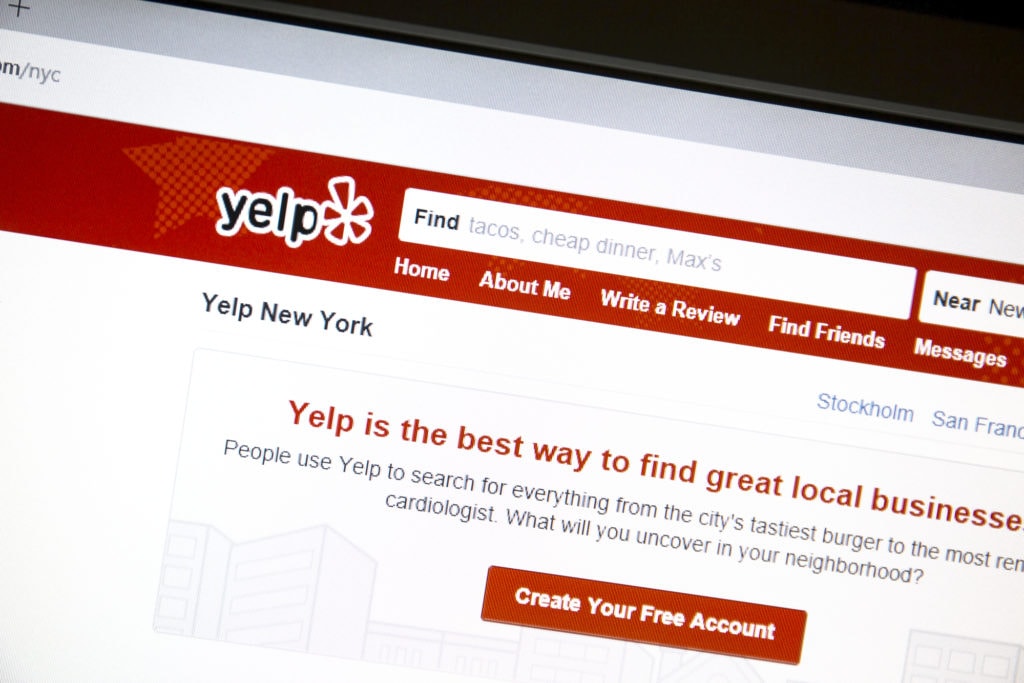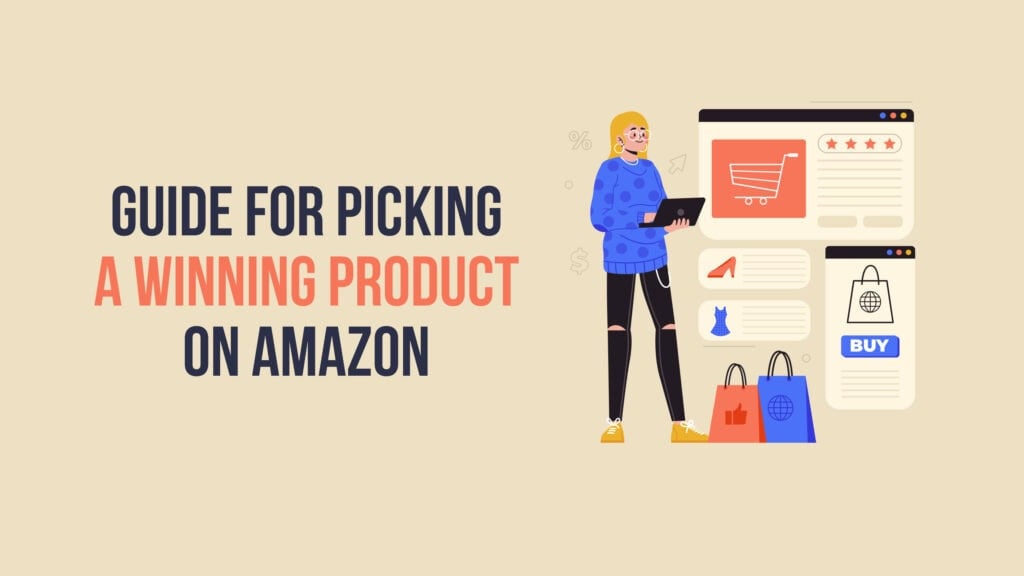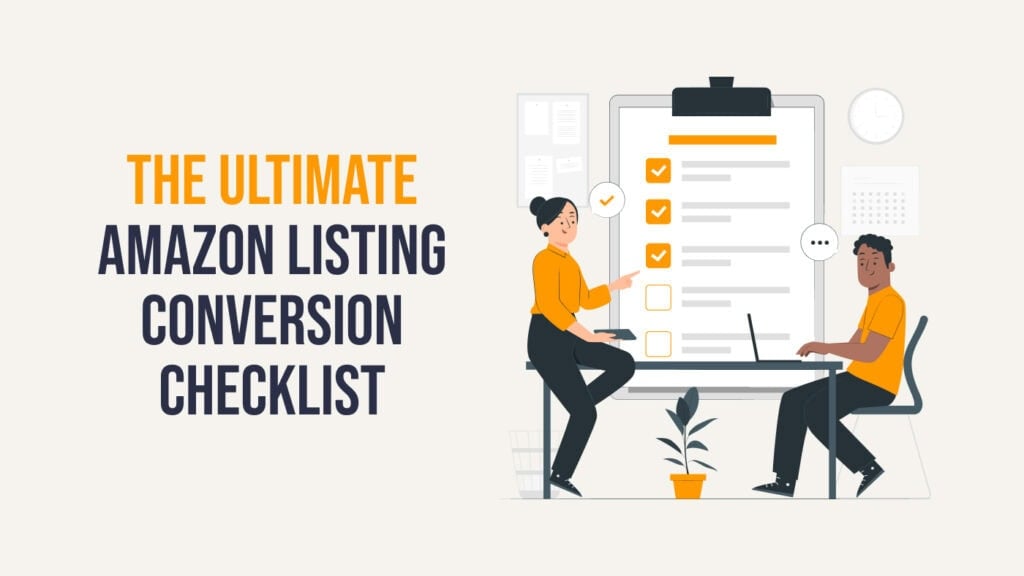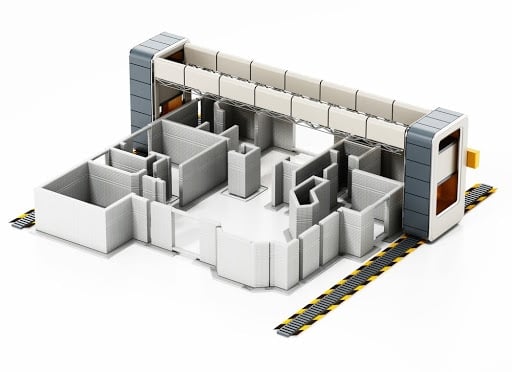Are you wondering how you can improve your product and increase the value you offer your customers? Well, you're already sitting on valuable data: your customer reviews.
You no longer need to wonder what you're doing wrong or how you can do better. Your customer reviews tell you what they want, what you should do differently, and how you can improve. In this article, we'll help you mine your customer reviews for useful information on how to upgrade your business.
Let's get started.
Using Customer Reviews to Improve Your Product
Justin Ray and Gabe Klingman of Roam USA shared their process for getting 10,000 reviews per product on Amazon. Not only do they get glowing reviews, but they also provide a stellar customer experience in the process.
Long Story Short: Customers Reviews Matter
It might surprise you to learn how much your customers care about your reviews. In fact, a Fee article shows that consumers care more about the number and quality of your reviews than just about anything.
The article breaks down a study by researchers from MIT, Harvard, Stanford, and Boston University. They studied local businesses in particular. The study found that customers care a lot about low prices and good reviews. "In other words, consumers want professionals who offer low prices and are well-reviewed by others, not vendors given the green light by government officials," the article said.
See, customer reviews say a lot. They tell prospective customers what other people think about your business. It also shows them whether they'll do better buying from you or your competitor across the street.
But customer reviews don't matter just to customers. Business owners and entrepreneurs can learn a lot from customer reviews. A reliable customer review strategy can determine whether your product grows and thrives or crashes and burns.
Here's why.
Why Listening to Customer Reviews Can Improve Your Product
The customer is the center of your business. Period.
Without your customer, you don't have sales. Without sales, you don't have revenue. And without revenue, you're closed. But it all starts with attracting customers by offering insane value.
Customer reviews say a lot about how you can create more value:
- Customer satisfaction: Was the overall shopping experience seamless? Did they get their product safely and timely?
- Experience with your product: Is the product itself functional? Was it worth the money you spent?
- Competitors: How is your product faring in comparison to your competitors. Many reviews might compare your product against similar products.
- Quality of your customer service: Did the customer experience an issue and reached out to you for support? What was the quality of service they received?
- Pricing feedback: Was the price they paid worth the value your product offers? Would they pay more? Or would they pay less?
When you research your customer reviews and learn all this valuable information, you can use it to improve your business and product.
How to Use Customer Reviews to Improve Your Product
Now that you understand the value your customer reviews hold, it's time to leverage its utility to the max. Here's how you can use what your customers say about you to your advantage.

#1 Assume The Customer is (Almost) Always Right
Yes, it's essential to take every review you read with a grain of salt. After all, some customers have unrealistic expectations. This can show up in brutal feedback without constructive criticism.
But many reviews are honest, sincere, and genuine. It isn't your job to disprove a customer. It's your responsibility to ask why customers are saying what they're saying.
You can't always control how other people say or think. But you can do your best to release a stellar product and offer exceptional service.
#2 Don't Take Product Reviews Personally
With that said, reading some customer reviews can be emotionally draining. Many people fear criticism, and entrepreneurs are no different.
Entrepreneurs invest more than their time and money into their business. Many are also emotionally invested. That's why criticism often feels like a personal attack.
But remember: customer reviews and feedback can put you on the fast track to delivering a premium product. You don't have to think about what's wrong with your product. Your customers are already telling you (although in sometimes not-so-nice language).
#3 Do Some One-on-One Outreach
Go through your list of negative feedback and see which ones hold specific pain points. Send them a message, email, or phone call. Buyer contact policies can vary by which e-commerce marketplace you choose.
The point of one-on-one outreach is to collect more information. By reaching out to dissatisfied customers, you can learn their specific pain points and issues with your product or service.
Upset customers might even be pleasantly surprised to learn how you committed you are to offering an excellent product and equally exceptional service. This might even convince them to revise their review to a more favorable rating (more on that later).

#4 Send a Product Survey
Sometimes, it's challenging to gather data from customer reviews alone. To supplement your research, you can also send customer surveys. Email tends to be the most common method of communication.
Surveys with targeted questions make it easier to gather data on product development. In your surveys, you can ask questions including:
- On a scale of 1 to 10, what would you rate our product?
- What was your reason for the rating you chose?
- How likely are you to recommend our product?
- Would you repurchase our product?
#5 Organize Your Negative Customer Reviews Into a Spreadsheet
After collecting data from customer reviews and product surveys, compile all your information into a single spreadsheet. Centralizing your data makes it easy to sort. Sort by customer pain points, product issues, and various complaints. For example, you can quickly sort your data by issues (e.g., product design, flimsy packaging, poor customer service). That makes it easy to see which problems are most prominent.
#6 Develop a Plan for Managing Your Reviews
After you collect, organize, and analyze your data, it's time to develop a plan. Take what you learned and see how you can make improvements. Improvements can look like:
- Revisiting your product design
- Teaching new customer service techniques
- Making it easier for customers to contact you when they experience an issue
For example, here is a 1-star Amazon review a customer left for a Barkbox dog bed:
Are you receiving multiple reviews about misleading sizes? Improve your listing to make the product dimensions clearer for future customers.
How Do You Ask A Customer To Rate Your Service?
But what happens when you don't have any customer reviews? How do you get online reviews for your business to improve your product and increase your value?
If you want to get reviews, the answer is simple: ask for them.
What Percentage Of Customers Write Reviews?
Search Engine Land conducted a study that found only 50% of consumers left a review. That's after the business asked. Fortunately, digital tools and strategies can streamline the process of asking for reviews.
Here are a few of our favorites:
Send a Follow-up Email
While not among the smartest ways to ask for reviews, emailing is still effective. Each customer receives an automatic email after purchase. It asks about their experience and reminds them to leave a review.
Take it a step further by using a drip email sequence. Here's an example of a three-email sequence:
- Upon purchase: Thank them for making a purchase. Give them an ETA on when they will receive their product. Leave your business phone number and email address in case they have any questions.
- Seven days after purchase: Ask them to receive their product. Remind them that you are available should they have any questions. Include your business phone number and email address.
- Ten days after purchase: Ask them if they had time to experience the product. If they're satisfied, kindly ask them to leave an honest review of the product. Again, remind them that you are available for any questions or concerns.

Packaging Inserts
Even in this digital age, printed marketing materials still do the job. Slip a printed postcard-sized packaging insert inside the package before it gets shipped. Include the following:
- Your business contact information
- Brief description of the product and how to use it
- Reminder to leave a review after using the product
Packaging inserts can produce results. But we still recommend following up digitally. Often packaging inserts can be set aside and forgotten about. A well-timed email will spur the customer to type that review for you.
Offer Incentives for a Review
Nearly anything can be worth doing if your incentive is enticing enough. After all, most costumers will postpone writing a review indefinitely. If you want them to take action now, you must offer an incentive. That can look like providing a giveaway, offering a discount off their next purchase, or even a gift card.
Here's an example of one company using Facebook chat, memes, and free stuff to get more customer reviews. After buying a steam mop from PurSteam, they offer you a $10 Amazon gift card to leave a review:
Script Examples: How Do You Politely Ask For A Good Review?
Now, you know that asking for reviews is critical for your business. But how exactly do you do it? Below, we'll share a request for a customer review template you can email your customers. We'll also include real examples from real companies that may inspire your own requests for customer reviews.
Template
Dear [CUSTOMER NAME],
Thank you for your purchase! We're so excited for you to use your new [product name].
After you get a chance to test it out, write a review by clicking the link below and let us know your thoughts and experience!
[Link to leave a review]
We value your feedback because we use it to deliver value-packed products to our customers.
We appreciate you taking the time to help us out. And if you have any questions, you can reply directly to this email or call us at [123-123-1234].
Thank you,
[First name]

How Much Can A Bad Review Hurt Your Business? Or Help It?
Do Reviews Increase Sales?
The widespread use of the internet has changed how people shop online and in-person. Customers want to know other people's ratings of your company and product before they hand you their money.
A study in 2016 showed that 90% of consumers read ten reviews or fewer before they could trust a brand. In other words, customer reviews boost your credibility. When customers don't know much about your product or brand, they use online customer reviews to fill in the gaps.
But what happens if you have a batch of negative customer reviews?
How Much Does A Bad Review Cost?
A bad review can have a significant impact on your business. According to a ReviewTrackers study, "94 percent say an online review has convinced them to avoid a business."
Another study by Search Engine Land shows that only 13% of consumers will do business with a company that has a 1 or 2-star rating.
These numbers aren't looking so good. Lost customers mean lost revenue.
So, is there anything you can do about your negative reviews?
Can You Pay Yelp To Remove Bad Reviews?
In case you've been living under a rock, Yelp connects people with businesses. It reported 28 million average monthly mobile app unique users. That's a whole lot of using Yelp to help them decide which business they'll support with their dollar.
So when a customer slaps you with a bad Yelp review, is there any way to remove it? Or will it be an ugly blemish on your now not-so-spotless track record forever?
The answer is a little complicated. Yelp announced that reviews are never "deleted" by their recommendation software. However, Yelp's algorithm plays a role in which reviews users see first.
But sometimes Yelp's algorithm gets it wrong. "Reviews that reflect perfectly legitimate experiences are sometimes unrecommended out by the recommendation software's algorithmic processes," the company said.

Unfortunately, there are no clear-cut instructions for targeting negative reviews to get unrecommended. The best you can do is respond to negative reviews. Use the steps outlined earlier to create better shopping experiences for all customers moving forward.
Can You Remove A Bad Review On Google?
Okay, there's no clear victory with Yelp. What about Google reviews?
Like Yelp, there is no clearly defined method to remove negative reviews from your Google business profile.
But just because there isn't anything you can do to remove negative reviews, doesn't mean you do nothing. There are still several ways you can redeem your company and manage negative customer reviews.
How Do You Improve Customer Reviews?
Prominently Display Your Best Reviews
A study by Spiegel Research Center shows that displaying your reviews can increase conversion by 270%. Giving more attention to specific feedback isn't exactly "improving" your reviews. However, it can improve a prospect's initial impression of your brand. This marketing tactic can also potentially offset the negative impact of unfavorable reviews.
If you're selling on an e-commerce marketplace, like Amazon, you don't have much control over how you format your store page and product listing. But if you built your online store using a platform like Shopify, it can be easier to sprinkle glowing reviews and testimonials throughout your website.
Respond to All Feedback
As you learned about Google and Yelp, you can't remove all negative reviews. Still, that shouldn't suggest you do nothing.
Responding to negative feedback can be an effective way to mitigate the harmful effects of a negative comment. According to Dr. Manis with the Harvard Business Review, "A manager's response to a negative online review potentially prevents a subsequent negative review, because a future reviewer can observe prior complaint management interactions for a complaint similar to their own."
Also, be sure to respond to negative feedback timely. "The faster the manager responds to a negative online review, the faster the reviewer is appeased," Dr. Manis added, "And prospective reviewers can see that the manager and the firm are dedicated to solving customer complaints in a timely fashion."

See, when you respond to negative feedback, you help steer the narrative. For example, if the buyer leaves negative feedback due to a damaged order, you can respond to their comment offering a replacement or refund.
Future customers will see this and know that they know you are available to address their concerns if anything goes wrong.
Ask Customers to Revise Their Feedback
Some e-commerce marketplaces allow you to contact the buyer and request for them to revise their feedback.
For example, eBay lets its sellers contact their buyers to attempt to resolve the situation. If you solve the complaint to the customer's satisfaction, sellers can send a Feedback Revision Form. You can ask the buyer to update their feedback to a 5-star review. And it doesn't have to sound artificial. Here are excellent customer service reviews examples you could suggest:
Customer Reviews Examples
- Had an issue with the product arriving damaged. The seller contacted me within 48 hours and offered me a free replacement. The second time, the product arrived carefully wrapped and functions perfectly. 5-stars for customer service.
- The Instructions were confusing. The seller called me and walked me through the process. Also, they asked me for feedback on how to make instructions more precise and easier to follow.
These positive reviews examples document the buyer's entire experience. This feedback can impress your future customers.
In addition to seeing customer reviews and opportunities to improve your product, you can also use them as a signal to help your customer. "They are, in fact, a form of customer outreach that's often akin to a cry for help," said Miriam Ellis with Moz.

Increase Your Number of Customer Reviews
Often the fastest way to improve your negative customer reviews is to drown them in positive reviews. Consumers are more likely to be forgiving of bad reviews if it comprises only a small percentage of your total feedback.
How Do I Get More Online Reviews?
Want to offset the number your negative customer reviews by bringing in more total reviews? Follow our strategies outlined above for requesting customer reviews:
- Send follow-up emails
- Include packaging inserts
- Offer enticing incentives
How Many 5 Star Reviews Do I Need?
According to ReviewTrackers, a 5-star rating can actually do the opposite of what you'd expect and make you appear artificial.
"A business can have a 5-star rating, but a prospective customer will think it's too good to be true," they said. Instead, you'll want to aim for a score between 4 and 4.5 stars. A healthy balance between top ratings and negative reviews can make your score look more realistic.
Customer Reviews: Final Words
It may be tempting to take negative customer reviews and dismiss them as unrealistic or overly critical. However, customer reviews offer valuable data. They can help you improve your product, grow your business, and ultimately improve your bottom line.
Remember: creating value for your customers is a top priority. If you listen to what they're saying, you'll know exactly what to deliver.
At Capitalism.com, we love helping entrepreneurs grow a business they love so much they can hardly wait to get up and build every day. We’d love to help YOU, too! That’s why we created this video training mini-series (absolutely free) for you. Check it out, and let us know how we can help.













